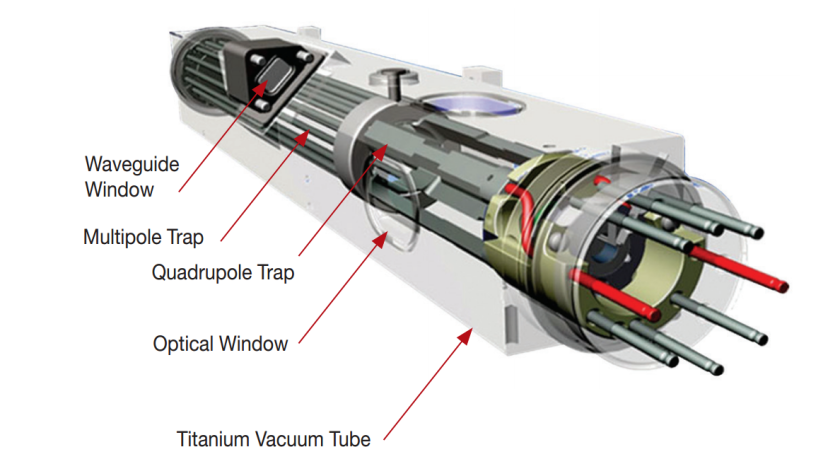https://www.sciencenews.org/article/atomic-clock-deep-space-travel-nasa-passed-first-test
https://www.nasa.gov/mission_pages/tdm/clock/index.html
https://en.wikipedia.org/wiki/Deep_Space_Atomic_Clock
NASA’s Deep Space Atomic Clock, which launched on a satellite in June 2019, outperformed all other clocks in space during its first year in orbit around Earth. The clock, DSAC for short, was at least 10 times more stable than clocks on GPS satellites.
To navigate the solar system today, space probes listen for signals from antennas on Earth and then bounce those signals back. Ultraprecise, refrigerator-sized atomic clocks on the ground measure that round trip time.
A future spacecraft carrying a toaster oven–sized DSAC could simply measure how long it takes a signal from Earth to arrive and calculate its own position.
DSAC is so stable because it keeps time using ions, rather than neutral atoms. Bottling ions within electric fields prevents those atoms from bumping into the walls of their container. Such interactions cause the neutral atoms in GPS satellite clocks to lose their rhythm.
For space exploration, atomic clocks must be extremely precise: an error of even one second can mean the difference between landing on Mars or missing it by hundreds of thousands of miles. Up to 50 times more stable than the atomic clocks on GPS satellites, the mercury-ion Deep Space Atomic Clock loses less than 1 nanosecond in 10 days (less than one second every 10 million years).
Its applications in deep space include:
- Simultaneously track two spacecraft on a downlink with the Deep Space Network (DSN).
- Improve tracking data precision by an order of magnitude using the DSN’s Ka-band downlink tracking capability.
- Mitigate Ka-band’s weather sensitivity (as compared to two-way X-band) by being able to switch from a weather-impacted receiving antenna to one in a different location with no tracking outages.
- Track longer by using a ground antenna’s entire spacecraft viewing period. At Jupiter, this yields a 10–15% increase in tracking; at Saturn, it grows to 15–25%, with the percentage increasing the farther a spacecraft travels.
- Make new discoveries as a Ka-band — capable radio science instrument with a 10 times improvement in data precision for both gravity and occultation science and deliver more data because of one-way tracking’s operational flexibility.
- Explore deep space as a key element of a real-time autonomous navigation system that tracks one-way radio signals on the uplink and, coupled with optical navigation, provides for robust absolute and relative navigation.
- Fundamental to human explorers requiring real-time navigation data.

I haven’t yet found out how much this atomic clock weighs. The satellite payload is 17.5 kg but the atomic clock is only a small part of that weight.